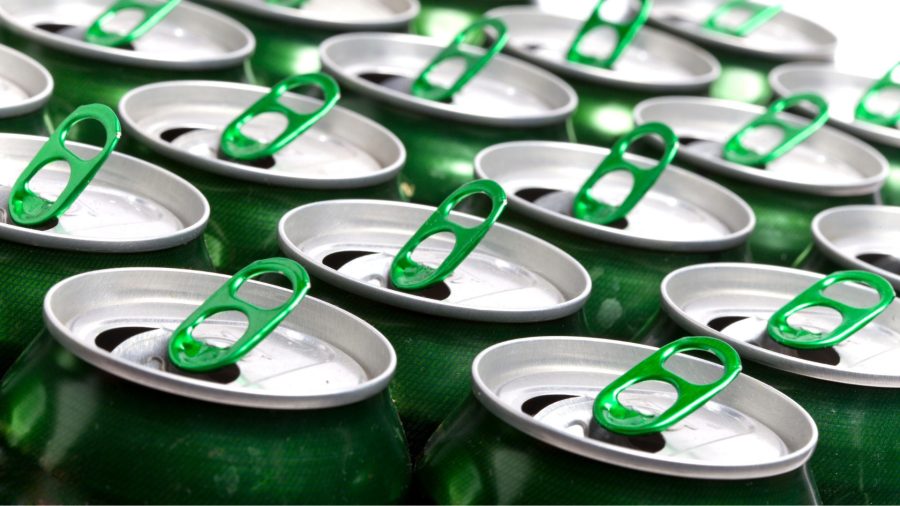Packaging shortages are fueling persistent fluctuations in food and beverage product availability ahead of the holidays, as many manufacturers source materials from overseas — and there’s no clear end in sight.
“Supply chain disruptions continue to affect the food and packaging industry, with limited supplies of packaging materials, primarily glass, containerboard, cardboard, and aluminum,” Neil Coole, Director of Americas Food and Retail Supply Chain at BSI, told The Food Institute.
Combined with constant labor issues and a shortage of cargo containers to move bulk materials, “these challenges will continue to increase the pressure on manufacturers and suppliers to meet growing demands,” Coole added.
Paper-Based Materials
Intense demand for corrugate, cardboard, and paper are driving challenges, largely due to increased shipping activity from major e-commerce retailers. Additionally, the uptick in takeout at restaurants is exacerbating shortages of items like coffee cups and to-go containers.
In late October, International Paper — a manufacturer of corrugated packaging and pulp — said that it absorbed an additional $50 million of supply chain costs for its export operations in its latest quarter, reported CNBC. (Nov 6)
Rick Williams, Practice Lead of Operations & Supply Chain at JPG Resources has seen paperboard and some film structure components in short supply, with mills limited in bringing on new business. “Some of the shortages we’re seeing could take about a year to cycle through,” he told The Food Institute.
Plastics
In addition to corrugate, sourcing plastic bottles and caps has been a recent challenge for Mitch Dingwall, Senior Director of Product Innovation at Golden State Foods, “although the situation has improved and no longer represents a top concern,” he told The Food Institute.
Resins — key building blocks of a variety of plastic products — have been in short supply since a rare ice storm in Texas earlier this year knocked out a significant portion of production capacity and drove prices up 30% to 50%, reported Supply Chain Dive. (Sept 2)
Global supply chain issues are also making it difficult for companies like Procter & Gamble to obtain recycled plastic for more sustainable packaging initiatives.
“There’s simply not enough recycled plastic available to meet the commitments that have been made by not only just P&G, but our peers and industry,” Jack McAneny, Vice President of Global Sustainability, told Reuters. (Dec 3)
Aluminum
The shortage of aluminum still echoes from the peak pandemic period in 2020, when canned good stockpiling escalated, darkened breweries turned from kegs to cans, and lockdowns catapulted the popularity of ready to drink products like hard seltzer.
With demand — and costs — continuing to climb, Ball Corporation is raising the minimum order for its preprinted cans fivefold, effective January 1. The announcement sent shockwaves across the craft beer industry, as resulting restrictions could further damage the bottom line for many independent breweries, reported CNN. (Nov 27)
“The aluminum can shortage is an indicator of consolidation in packaging, enabled by the financial industry, as well as the costs and complexities of setting up production plants,” tech startup consultant David Pring-Mill told The Food Institute. “The most negative impact is felt by the emerging food and beverage brands that have mastered their digital channels and are on the cusp of growth.”
Glass Bottles
A glass bottle shortage is also putting significant pressure on the wine and spirits industry. As The Financial Times reports, a central cause — beyond the labor issues and logistics problems — is robust demand.
Spending on alcohol rose almost 13% for wine and 14% for spirits between the first quarter of 2020 and the third quarter of 2021, Bureau of Economic Analysis data showed.
The shortage is forcing some winemakers to let wine age in wooden barrels for too long, which can lead to the drink tasting “like a sawmill,” Phil Long, the owner of Longevity Wines, told Business Insider. (Oct 19)
The cost of glass has skyrocketed by 45% compared to 2019, along with prices of nearly every good needed to bottle wine.
Many vineyards have resisted raising prices so far, but it is unclear how much longer winemakers can hold out. “Glass is a main ingredient to bottling wine,” said Long. “Imagine you’re a cookie company and there was no flour.”












